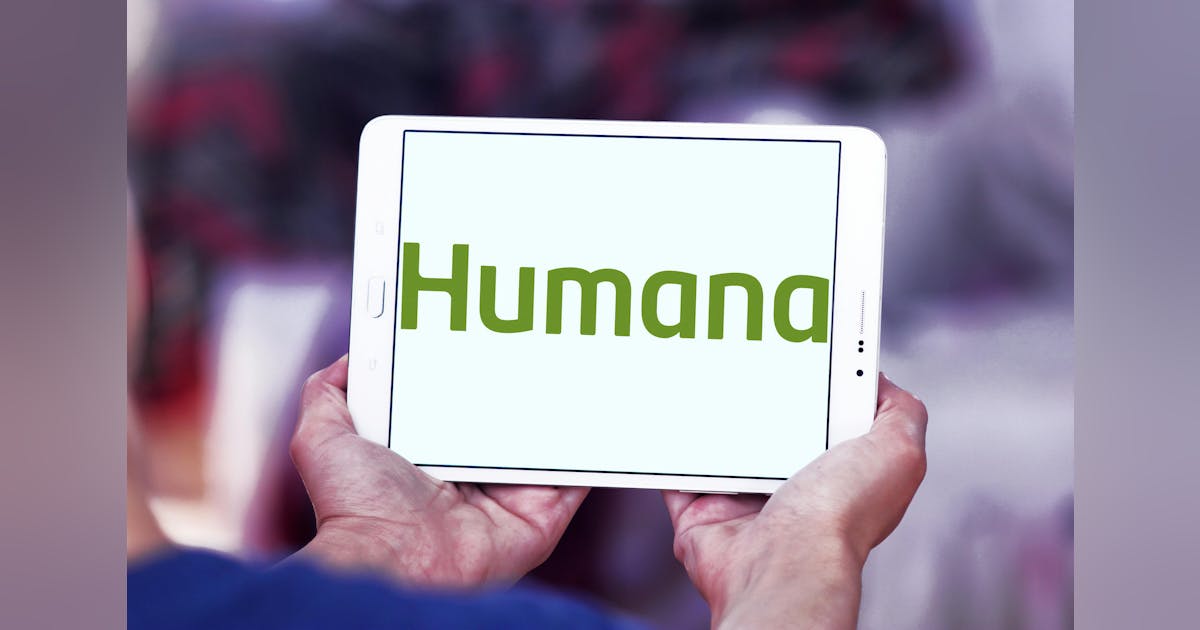PROTECT YOUR DNA WITH QUANTUM TECHNOLOGY
Orgo-Life the new way to the future Advertising by AdpathwayIntegrated Health Partners (IHP) is a nonprofit, FQHC-controlled clinically integrated network, dedicated to advancing value-based care and payment reform for traditionally underserved populations in San Diego and Riverside counties in California. Kristine Ortwine, IHP’s director of population health IT and analytics, recently spoke with Healthcare Innovation about how the FQHCs are leveraging analytics to succeed in value-based care arrangements.
Established in 2015, IHP’s network spans 97 clinical sites and works with six health plans in Southern California.
Healthcare Innovation: Kristine, could you talk about how Integrated Health Partners came together initially, and whether it's grown substantially since then?
Ortwine: It has grown substantially. IHP began in the 2015-2016 timeframe. I joined the IHP team in 2018. My role at the time was around helping the network unify their data to be able to support many of the initiatives that they were trying to execute on. Ultimately, IHP is a clinically integrated network. Their role really was to help federally qualified health centers join together to adopt best practices, to improve patient outreach, patient care, patient outcomes, and to help support them as they prepared for alternative payment models and value-based care initiatives. When I started in 2018, we were working with two health plans and now we work directly with six health plans, and we've grown probably 350% in terms of our membership. We currently are at about 389,000 managed care lives. When I started, it was probably around 100,000.
HCI: Do the FQHC leaders serve as the board members and steer the direction of initiatives?
Ortwine: Yes. IHP is really working for the nine health centers that are participants. The board is led by the health center leadership and supported by the executive leadership and staff at IHP. But the health centers are the leaders, and they determine the direction of the network.
HCI: Are the health plans Medi-Cal insurers? Or others as well?
Ortwine: Our book of business is really growing. We’re running at about 97 to 98% Medi-Cal, which is California's version of Medicaid. But we do have and continue to grow other books of business. We have a small Medicare population. We also have new health plans. We are an FQ hub for SharpCare, and we have plans through SCMG [Sharp Community Medical Group]. We also have some commercial through Anthem. Our most recent venture is with our ACO called “My Choice Quality Care Network.” That is a new offering from CMS. It’s a Medicare Shared Savings Program that rolled out in 2025.
HCI: What are some of the challenges that the FQHCs face when they're operating independently that being part of IHP helps them improve? Does it involve helping them see their own data more clearly, or does it involve aggregating data across the FQHCs and pulling in data from other sources?
Ortwine: I think it’s all of that. FQs are resource-constrained in general. They serve a population of underinsured and uninsured individuals, and they have a huge footprint in the community. One in three people are accessing primary care through a federally qualified health center. And what that means is that people go lots of places lots of times. IHP has an open door policy, so that means a patron can receive care wherever they need to. That's a lot of records in a lot of places. So individually, these health centers are doing a really great job delivering care, but it's hard when you can see only a partial picture of that patient.
The network offers support in a couple of ways. One is from the data aggregation perspective, and Arcadia is our partner there with our population health tool. If I walk into Neighborhood Health, for example, and I'm looking at this patient, I can see that that she's also been at Vista, and maybe she had a hospital discharge from one of our hospital ADT partners — we have a feed with our local health information exchange. Their ability to see that longitudinal patient record really helps them deliver quality care. It helps them understand the overall patient status, so that they can target and not duplicate services.
Someone who has very limited staff in a single site now has the ability, with the support of Arcadia and IHP, to look at how that patient has moved through the network, and they may not have had the resources to do that otherwise.
Another piece is around how we can support their clinical, operational and coding staff that use the data. Where can we focus our resources? What does our financial picture look like in some of the contracts that we're working on? What are the most vulnerable populations, in terms of advanced care management that you want to engage? So it's not just the technical piece that helps them jump-start merging all of this very fluid and disparate data; it’s also the support piece to help them operationalize using that data and enhance and improve their performance.
At IHP, we also have an enhanced care management team of 12 at the central level that helps engage patients who qualify for enhanced care management services. We want to ensure that the neediest patients get the type of care that best serves them. That’s the type of program that needs to be leveraged when you're talking about patients who are either difficult to reach or are in very complex situations and are getting lost in the system.
HCI: Are those clinics on a variety of EHRs, and was that part of the challenge in the beginning — getting it set up so that the data flows back and forth?
Ortwine: Yes, our health centers are all on different EHR vendors. And this is probably the strongest reason for having a pop health partner: We have a couple who are on NextGen, just as an example. Each of those health centers is an independent entity that's leveraging that instance of NextGen with their own workflows and their own data inputs. So even if you have them on the same vendor, how they're collecting data, how that data is being translated into the tables, and then how that data is being integrated in Arcadia’s larger data lake is all very different. All of it needs to be mapped and optimized. So while each of the health centers does a great job within their own ecosystem, when you think about population health in general, you want to look at the totality of that patient across multiple clinical systems, across HIEs, across immunizations, across claims data and enrollment. So that's the beauty of them looking at data in a new way. If they were trying to do this by themselves, it would be time-intensive and much more costly for an individual health center.
HCI: Are there some sources of data that are challenging to get, like lab data or behavioral health data?
Ortwine: It’s not just about getting access to the data. So if I could reframe that, maybe it's about interpreting and stabilizing the data. I could have a wish list of all data, but is that data readily available? Is it being collected in a standard way? If we were to invest the energy to build a live connector or a regular connector into Arcadia, will that data be able to be interpreted appropriately and joined with other data that we have in the platform?
You just referenced behavioral health, and that is a wonderful example. Probably top of mind with our organization is closed-loop referrals data. Because we have a strong care management program here, oftentimes, as we should, we refer patients out to community-based organizations to help them address things that are outside of a clinical lens. Maybe they have food insecurity, housing insecurity, or employment issues so we refer them out. But how do we know that that referral actually occurred, so that we can understand how it impacts the patient's care? That's a great example of a data source that's difficult to get our hands on. But ultimately, I believe the challenge is really around when we do have access to data, ensuring that that data remains healthy and stable and can be used and interpreted appropriately across the network.
HCI: What about that social determinant data you just described — to identify patients who might need transportation or housing or food help. Are the clinics themselves surveying their own patients to gather that data, or are there other sources of that data?
Ortwine: It's sort of a mixed landscape right now. Equitable access to care is a driving force not only for our health centers, but it's a pillar of IHP’s mission, so identifying patients’ true needs across social drivers of health is something that we're investing in. But as you stated, that type of data is not only difficult to capture because it's sensitive in nature, it's difficult to follow throughout a patient's lifetime of engagement with us. As with any other initiative, each health center is at a different place. While everyone is attempting in different ways to collect that data, how they store, keep and leverage that data might be different across the health centers in the state of California. We're working across the state with Cal-AIM, which is a huge initiative in California, and we support that initiative, and work alongside our DHCS [Department of Health Care Services] partners to determine how we can get that data in a standard, coded way.
HCI: Do you also have strong health information exchanges in your area that you can count on to get data from and submit data to?
Ortwine: Yes, we have San Diego Health Connect, San Diego County’s HIE. We established an ongoing feed with San Diego Health Connect’s ADT. We provide San Diego Health Connect with a monthly roster of active patients, and then they provide us real-time messages of those ADT alerts. We are speaking with Manifest MedEx about the possibility of establishing a very similar feed so that we can understand in real time within the rest of the aggregated data activity for those entities that are participating with Manifest MedEx.
I want to be clear, not one tool solves everything; not one technology works for everyone. But what we really strive to do as we support the health centers is limit the number of places they have to go to get information. We don't want someone who's already strapped for time having to remember this system for this, and that system for that. So while each of these entities — San Diego Health Connect and Manifest MedEx — have elegant offerings of their own, or individual portals that you could use, we're trying to limit that boots-on-the-ground clinician or operational person having to do that. By how we bring that information in, we want them to have a one-stop shop. Then once we have that information, our ability to leverage our own technology resources to push that data to them automatically becomes game-changing. And we do have programs that are built around those ADT messages for transition of care and enhanced care management engagement.
HCI: Do you work directly with the payers on pay-for-performance contracts?
Ortwine: We do. We work directly with the health plans to help ensure that gaps are being closed, ensure that the quality of the information and data that's being provided to the health centers is correct and accurate. We can follow up and work through data issues, patient assignments, and close care gaps.
HCI: Are the health centers being successful in some of these alternative payment models?
Ortwine: Yes. I think IHP is a great example of how you can leverage this support at the network level across those entities that are operating in different geographies with different populations with different resources to push forward with value-based payment. We have two professional risk contracts right now, one with Anthem and one with Blue Shield Promise. That’s a new sort of venture for our health centers, and I think it would have been very difficult for them to start those kinds of relationships and those risk contracts without overarching support, so that that's a real win. We have opportunity to improve care for our patients and manage costs with these alternative value-based care models that might be new to them.
This new MSSP ACO product is a great example of how we can band together and use the strength of the network to support new types of structures for patient engagement and care that might not have been feasible. We all know that this stuff is tricky, but value-based care is not going anywhere. We are going to have to continually deliver better quality of care for a reasonable cost and make sure that the patient isn't the one that pays in the end. We want the teams to deliver the care and for us to provide the support they need to be successful.
HCI: Is there anything else I haven't asked about that you'd want to stress about the work with Arcadia, or other projects you are looking forward to in the next year?
Ortwine: I would say that for the health centers we work with, it requires time and effort to participate in these kinds of projects. They have to have a significant level of engagement to make these initiatives successful, so we are appreciative of their support in these types of programs to better the lives of their patients.
On the other side of that, this is our sixth year with Arcadia, and they have been a stellar partner in adapting alongside our network. Our network has changed. How we leverage Arcadia has changed, and how we support our health centers has grown and improved, so they have been a partner alongside us in facing the challenges in this swiftly changing environment that we all live in.



















 English (US) ·
English (US) ·  French (CA) ·
French (CA) ·